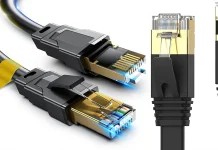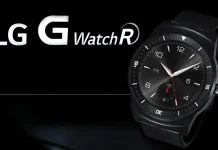
What are the standards for WiFi (802.11) table compare
wifi version 1-6
| standard | year | classification | GHz range | Mbit / s rate | maximum distance between devices in the building / outdoors meters / inches | maximum distance between devices in the building / on the street meters / feet | description |
|---|---|---|---|---|---|---|---|
| 802.11b | 1999 | WiFi 1 | 2.4 | 11 | 35/140 | 115/460 | first standard, 2.4 GHz range |
| 802.11a | 1999 | WiFi 2 | 5 | 54 | 35/120 | 115/390 | first standard, 5 GHz range |
| 802.11g | 2003 | WiFi 3 | 2.4 | 54 | 38/140 | 125/460 | increased speed, new encoding |
| 802.11n | 2009 | WiFi 4 | 2.4, 5 | 600 | 70/250 | 230/820 | The channel is expanded to 40 MHz. Special processing algorithms are applied, it is possible to combine several threads into one pool, maximum 4. Thus, the speed of information transfer increases |
| 802.11ac | 2013 | WiFi 5 | 5 | 6800 | 35/120 | 115/390 | The range of channels is up to 160 MHz. Special processing algorithms are applied, it is possible to combine several threads into one pool, maximum 8. Thus, the speed of information transfer increases |
| 802.11ax | 2019 | WiFi 6 | 1-7 | 10000 | 35/120 | 115/390 | Усовершенствована система coding, support for both 2.4 and 5 GHz standards |
WiFi standard appeared in 1999. The prerequisites for the creation of a standard of wireless information transmission was the emergence of wearable devices that need to be connected to the Internet. These devices were mainly represented by laptops.
To develop a standard, free frequencies were taken for use, besides having a small transmitter power, the devices could connect to each other at a short distance, which allowed the use of multiple devices in one place.
So, two frequencies were chosen for WiFi, 2.4 GHz and 5 GHz
802.11b standard (WiFi 1) and 802.11a (WiFi 2)
The first two standards for network traffic transmission. WiFi 1 worked at 5 GHz frequencies, WiFi 2 at 2.4 GHz frequency. More common standard 802.11b. This happened due to the fact that the production of WiFi adapters at a frequency of 2.4 GHz was cheaper. Although the speed was only 11mbit / s. Standard b supported a speed of 54mbit / s.
802.11g 2003 year WiFi 3
To increase the speed, the standard 802.11b has been improved, new coding algorithms have been applied, the speed has been increased to 54 Mbps, as in the 802.11a standard
802.11n 2009 year WiFi 4, 2.4GHz, 5GHz
By 2009, began mass production of laptops, phones also began to install WiFi modules. Existing speed wifi was not enough. In 2009, the new standard n was adopted, this standard consolidated the requirements for both ranges, becoming universal.
The channel has been expanded to 40 MHz, the new encoding, and the ability to combine 4 channels into one, to increase the speed (MIMO technology) has been implemented. Maximum transfer rate up to 600Mbps. Also increased the distance to 35 meters in the room or 150m in open space.
802.11ac 2013 year WiFi 5
Since historically it turned out that the 5 GHz band was not loaded, about 70% of the devices supported only the 2.4 GHz band, it was decided to refine the standard for the 5 GHz band. What was done in 2013. The standard 802.11ac, called wifi5, has been released.
In this standard, increased the channel to 160 MHz, you can combine up to 8 channels. The maximum speed is up to 6.8 Gbps.
802.11ax 2019 year (WiFi 6)
By 2019, the situation has developed that in the 5 GHz range there is a standard with a maximum transfer rate of up to 6.8 Gbps. And in the 2.4 GHz tandarte only up to 600 Mbit per second. To remedy this situation, the 802.11ax standard was developed, which received the WiFi 6 (sixth generation) name from the new WiFi alliance classification.
This standard should be the main use from 2020. In the WiFi 6 standard, the speed is increased to 10 Gbit per second, but this is not the main thing, the response speed has been reduced, security has been improved. Also, this standard specifies the use of other frequencies in the range of 1-7GHz, if they are free and available for use.






